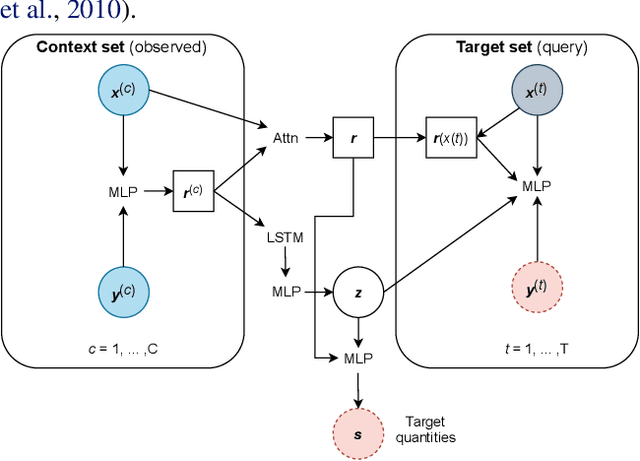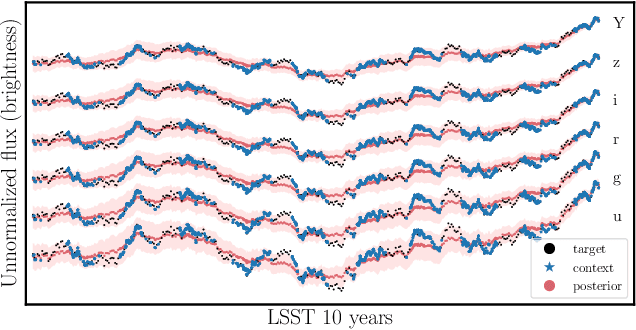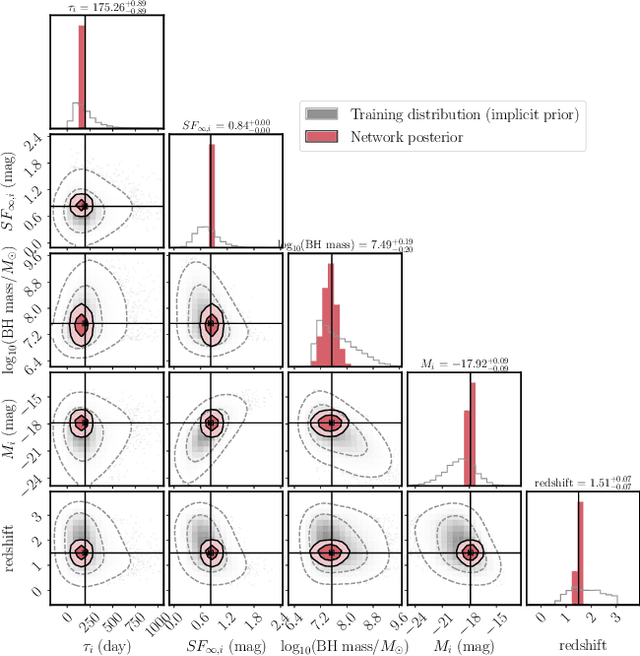Ashley Villar
Monte Carlo Techniques for Addressing Large Errors and Missing Data in Simulation-based Inference
Nov 07, 2022Abstract:Upcoming astronomical surveys will observe billions of galaxies across cosmic time, providing a unique opportunity to map the many pathways of galaxy assembly to an incredibly high resolution. However, the huge amount of data also poses an immediate computational challenge: current tools for inferring parameters from the light of galaxies take $\gtrsim 10$ hours per fit. This is prohibitively expensive. Simulation-based Inference (SBI) is a promising solution. However, it requires simulated data with identical characteristics to the observed data, whereas real astronomical surveys are often highly heterogeneous, with missing observations and variable uncertainties determined by sky and telescope conditions. Here we present a Monte Carlo technique for treating out-of-distribution measurement errors and missing data using standard SBI tools. We show that out-of-distribution measurement errors can be approximated by using standard SBI evaluations, and that missing data can be marginalized over using SBI evaluations over nearby data realizations in the training set. While these techniques slow the inference process from $\sim 1$ sec to $\sim 1.5$ min per object, this is still significantly faster than standard approaches while also dramatically expanding the applicability of SBI. This expanded regime has broad implications for future applications to astronomical surveys.
Inferring Black Hole Properties from Astronomical Multivariate Time Series with Bayesian Attentive Neural Processes
Jun 18, 2021



Abstract:Among the most extreme objects in the Universe, active galactic nuclei (AGN) are luminous centers of galaxies where a black hole feeds on surrounding matter. The variability patterns of the light emitted by an AGN contain information about the physical properties of the underlying black hole. Upcoming telescopes will observe over 100 million AGN in multiple broadband wavelengths, yielding a large sample of multivariate time series with long gaps and irregular sampling. We present a method that reconstructs the AGN time series and simultaneously infers the posterior probability density distribution (PDF) over the physical quantities of the black hole, including its mass and luminosity. We apply this method to a simulated dataset of 11,000 AGN and report precision and accuracy of 0.4 dex and 0.3 dex in the inferred black hole mass. This work is the first to address probabilistic time series reconstruction and parameter inference for AGN in an end-to-end fashion.
 Add to Chrome
Add to Chrome Add to Firefox
Add to Firefox Add to Edge
Add to Edge